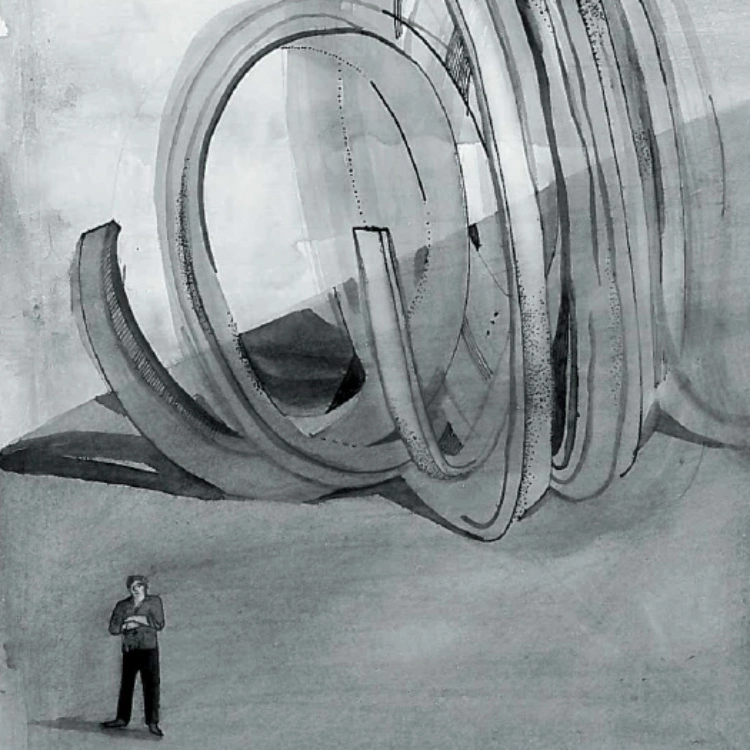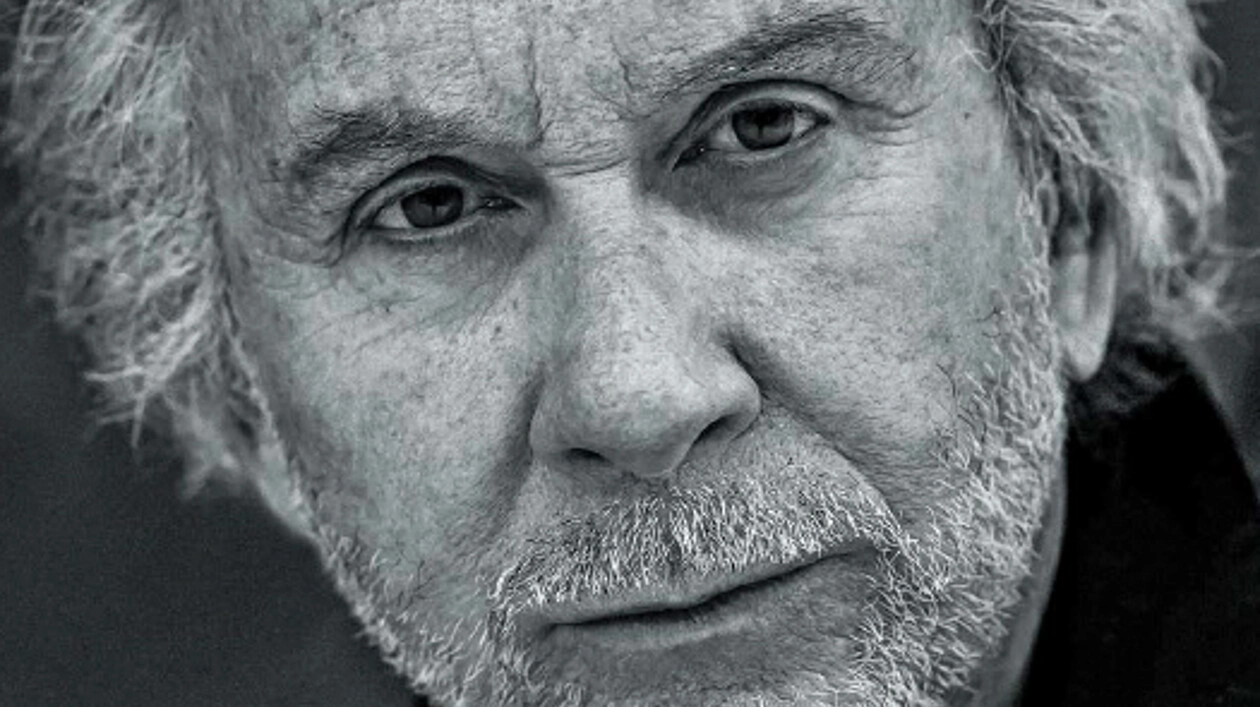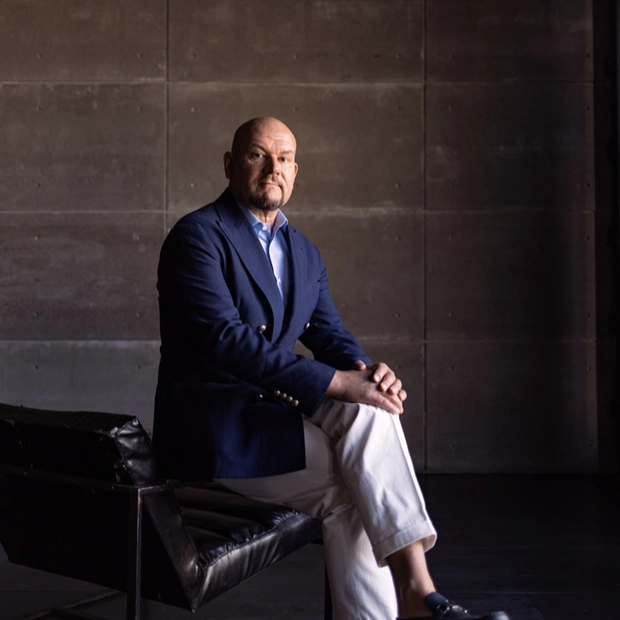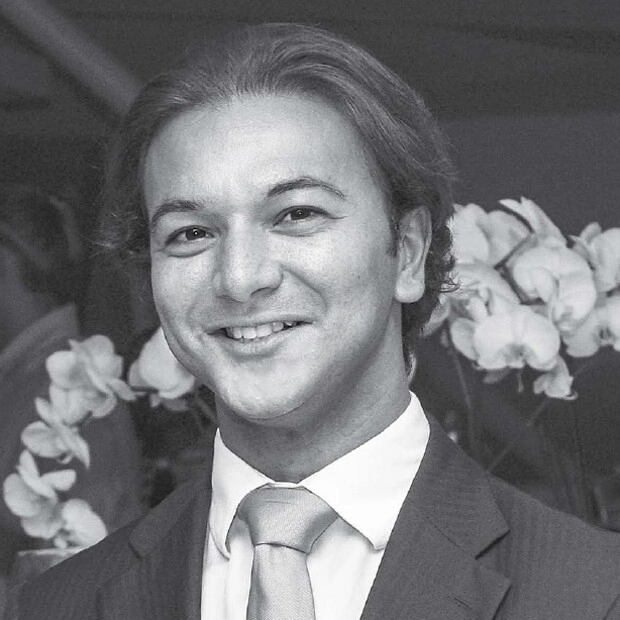The recent disastrous fire in Rio de Janeiro has left The National Museum of Brazil's collection almost completely destroyed. The one artifact that survived is the five-tonne metal meteorite Bendegó. In the same way it is possible that metallic sculptures up to one hundred metres high, made by our new col-umnist, sculptor, musician and poet Bernar Venet, will be one of the few objects to carry the cultural code of our civilization through the years to come. He speaks of his early life and artistic development.
Where my work is concerned, there was that almost inevitable scandal at Versailles. Every time I exhibit there, a court action is initiated by the public that argues 'This is horrible, you shouldn't put things like this and that's all'.
The day of the exhibition's opening saw me having lunch with the Director Jean-Jacques Oregon and my lawyer. My lawyer said: 'Bernar, I'm very disappointed. Until now we've had four exhibitions and each and every time there was court action. You see now there is no trial'. I said, 'OK, let's make it our new tradition and maybe people start to like my work'. It was at that exact moment when the phone in his pocket rang and he answered by saying OK, thank you. And then he turned to me and said 'Bernard, we have a trial'.
My obsession is to create but not to do sculptures to decorate bedrooms. I call it effondrement which in English means collapse. Usually artists make sculptures just like constructors, they put a piece of wood, combine it with something else and construct their sculpture. Me, I'm doing the opposite. I put everything in order very well and then suddenly — everything falls and this is what I show. It is fashionable to say that word but that's what it is, deconstruction. And sadly, it is normal for modern art to be understood only by a limited number of people.
My work is not inspired by any muse. What I do is essentially intellectual. You have a concept and you want to extend it and you have a wide range of possibilities. Some people invent two lines and for the rest of their lives they draw two lines in their paintings but it is not for me. I have to keep moving forward all the time.
I exploit this general concept in every discipline. It's the same idea in painting, sculpture, music, poetry, photography, movies. For example, I composed a ballet and it was played by the National Orchestra. I can do all that and may be do my best in poetry. Even much better than sculpting. It is modern and I wrote a book fifty years ago but they say that the most avant-garde poets of today do same things. Scholars have written their based on my poetry and their analysis leads to the conclusion that Kenneth Goldsmith, one of the most famous avantgarde poets of today, seems to work in the same field. My assistant gave my book to him and we met and became friends. He said 'I read your book. And then I read it again. It is the most interesting of what I read recently'. It is about mathematics not flowers.
What made me the way I am and formed me as an artist were several moments when I felt it is happening here and now and two important events in my childhood stick in my memory.
Although my father was a teacher and a chemist, the family was poor because unfortunately he had a brain tumour and was frequently in hospital leaving my mother to raise three boys almost alone. Once she didn't have money even to feed them and had to send my brothers to a parochial school. As for me, I was always badly dressed, skinny and sick with asthma preventing sport. I was always a good scholar, good at French but I didn't want to learn anything about history or geography. One day at school I was drawing and a teacher came and asked if I drew that as if it was impossible to believe I could. And in his eyes I saw appreciation and admiration for something I had done. He said that it was outstanding and asked me to do it again in order to put it on the wall. That day, as an eleven year old, was the first day when thanks to art I was appreciated.
The second moment was through contact with a local painter who paints lousy stuff like seascapes, landscapes and things like this. We never used the word 'art' in our family, no one was cultivated. But I liked his drawings so much and used to go there and watch him drawing. So, one day I went to see his paintings and my mother mentioned to him that I was talented in drawing too. I brought my pictures the next day and he looked and said that I'd be better than him. He advised us to buy necessary materials in Digne, which is twenty-five kilometres from our town and we went there to buy paint.
I'd seen a small book of colour plates without knowing what it was and there was Woman Washing her Feet by the River. And in the corner of the painting was a word I couldn't understand — Renoir. I asked the shop's owner what Renoir meant, he showed me other bigger books and told me how expensive and exhibited all over the world his paintings were. I bought the small book and it is still with me as an evidence of the moment when everything happened.
In my family, everyone worked in the small factory in the town. If you live in a working town you go to work to the factory. I was expected to do the same. So, thank you, Mr Renoir for my path. He is not my favourite artist today but he was a beginning. My mother bought many books about artists because that's what I wanted to do — to read about them and I read about Van Gogh and Rembrandt. She was so helpful though she didn't want me to be an artist because an artist was thought to likely starve.

I was so motivated and knew what I wanted and went to Nice because sometimes you have no choice. My brothers were doing their army service with one guy from Nice. He told us one day that he knew someone who knows someone who knows Picasso. I went to Nice with him and met the first one on the list. I was seventeen when I went there and tried unsuccessfully to enter the School of Decorative Art. Actually, it's easy but I failed and instead worked in theatre design and production. Looking back, I think that it was my luck otherwise I would have lost five years spending time on stuff I wasn't interested in.
I met the second one in line who knew Picasso. We became close with a very famous French artist Cezar. One day much later he was invited for a lunch with Picasso and suggested me to take his car and pick him up from the restaurant and we could have had coffee all together. It was a very good idea but I didn't know how to drive so I never met Picasso and Picasso never met me and it's OK.
Then I went to New York. It happened because I met Arman, a great artist of new realism. He was very generous and supportive. I was poor and starving and dreaming of New York. He helped me to make it come true. I met friends there in Big Apple, got aquatinted with artistic world and stayed. It was a centre of the world for me and a cultural centre by that time. There was a place called 'Maxus Kansas City' where only the art world members were allowed. Every table was occupied by artists of different kinds cinematographers, painters, musicians so if they had have put a bomb under a table there would have been no art left in America. It was a place I stayed every evening. One evening Andy Warhol gave a party there. Suddenly Robert Rauschenberg came to me and asked me for a slow dance. I thought that I should do that no matter that I wasn't queer. Thirty years later we met at his exhibition. He was in a wheelchair pushed by a young lady. My wife said I should tell him the story. I wasn't sure he remembered me or anything, his brain was pure whiskey but my wife pushes me to tell him. I told him 'Hi Bob, you don't remember me but in the late sixties I exhibited with you at Leo Castelli'. He was like 'Ah, yeah…' I said 'But don't worry I have a story for you. One day Warhol gave a Party at Maxus and we danced a slow together. I know that you cannot remember but of course I do remember it'. He looked at my wife then and told her 'He was a hell of a good dancer'.
Sic transit Gloria munidi. I knew all the people of my generation in the pop-art or minimal art. Andy Warhol, Rauschenberg, Jasper Johns were friends of mine. I have works signed and given to me by them. I knew them very well. And then the generation after more interesting for me — minimalists like Jasper Johns again, John Cage. And then the conceptualists. Some of them are still doing the same things but as for me I want to move and move and move. I have no interest in repeating myself. And since my brain is still functioning I prefer to do new things.






